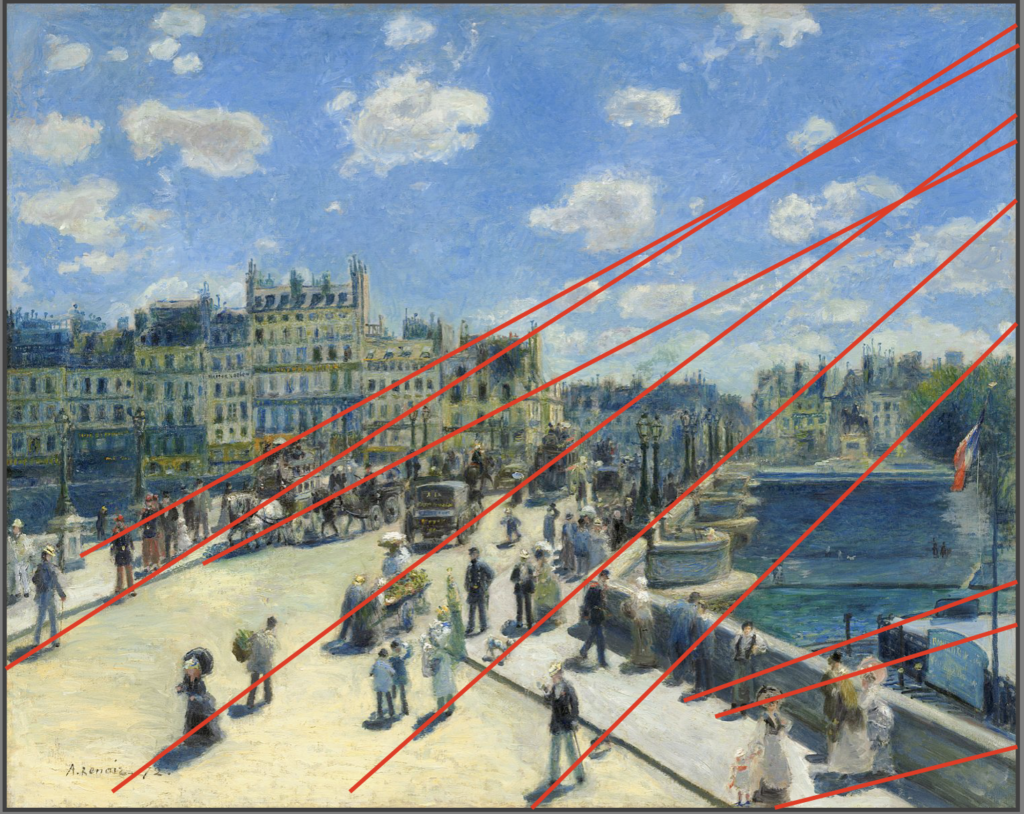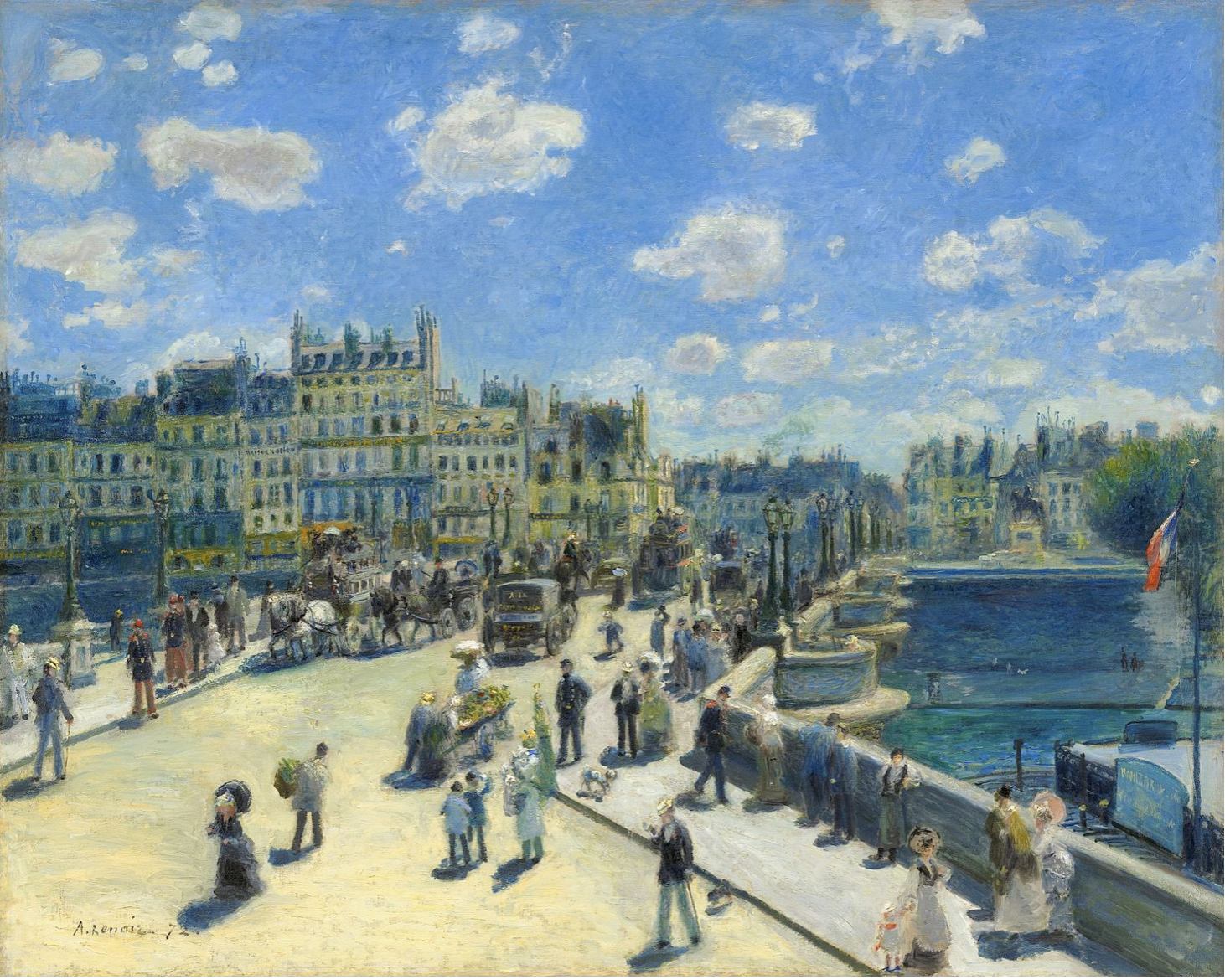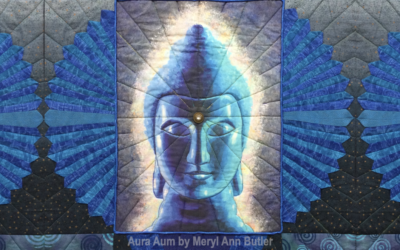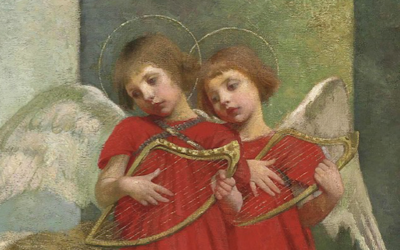Monet said that you could only work on an outdoor painting for 20-30 minutes before the sun moved enough to change the placement of shadows as well as to modify the colors. That’s why Monet often brought several canvases with him, so he could work on one for 20-30 minutes, and then move to the next one. He would return to the same spot the next day to pick up where he left off on each of them. This is why he had so many series (haystacks, Rouen cathedral, poplars, etc.)
Renoir clearly painted this over the course of many hours, because the red lines bisecting the shadows show how the angles of the shadows changed and flattened toward horizontal as the sun was in a position further down in the sky.
Shadows from the sun should be parallel to each other since the light source is very far away. Alternatively, in the studio, shadows from a close light source would angle away from each other.

So the odd feeling in this painting is due to the fact that the shadows are not accurately responding to a single position of the sun.
The items/figures with the steeper angled shadows would have been painted closer to noon, the items/figures with the shadows that are more toward a horizontal angle would have been painted at a time further from noon (likely later in the day, as the sun went down.) This offers a wonderful example in how the angles of shadows change over time outdoors.
It seems like Renoir might have compensated for this, but this was painted just as Paris was emerging from the horrors of the Franco-Prussian War. So Renoir’s interest is in depicting happiness and he is less interested in the science of perspective–and I agree with his priorities!




